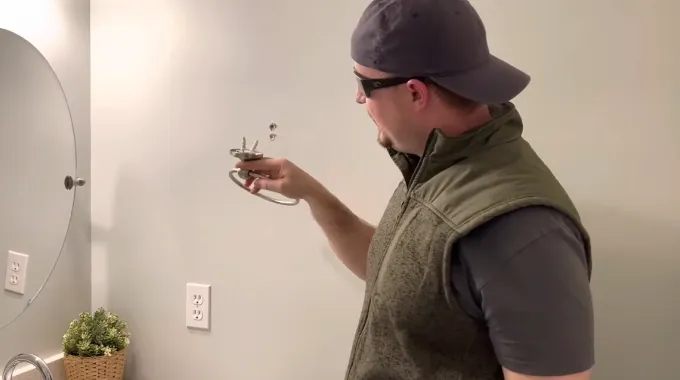Last Updated on March 13, 2023
You’ve just found the perfect spot for your latest artwork or shelves, but the drywall anchors keep falling out.
There may seem to be no end to this annoying problem, but don’t give up. Understanding why and how these issues happen will help make sure your wall-hanging goes smoothly.
From using the wrong anchor type to not preparing your wall and everything in between, there are many reasons why those drywall anchors just won’t stay put.
Improper installation, drilling holes too small or big for an anchor, opting for poor quality materials, and overloading on top of that all add up. Expansion of certain materials can also have dire consequences.
Ready to keep your anchors firmly in place? Let’s dive deeper into the causes of anchor pull-out so that you won’t get stressed out.
Why Are My Drywall Anchors Pulling Out: Reasons
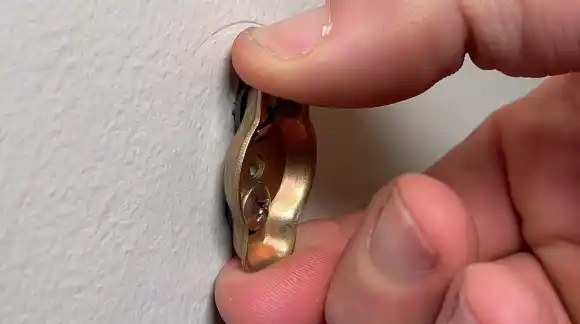
Drywall anchors are an essential tool for hanging items securely from a wall without damaging its surface. Unfortunately, even when installed correctly, drywall anchors can still pull out of the wall due to various issues.
We’ll discuss seven common reasons why these anchors fail and how to fix them. Let’s take a look at why drywall anchors pull out.
1. Improper Installation
One of the primary reasons that drywall anchors can pull out is improper installation. This can include not using the correct size and type of anchor for the job and not drilling the hole in the wall at the correct depth.
If a drywall anchor is not inserted into the wall to its full depth, it will not be able to provide adequate support for whatever is being mounted.
Also, if too large of an anchor is used, it will either expand too much and pull through the drywall, or it may be too big to fit entirely in the hole.
To properly install a drywall anchor, one must first determine what kind of weight they are attempting to hold before selecting an appropriate type of anchor.
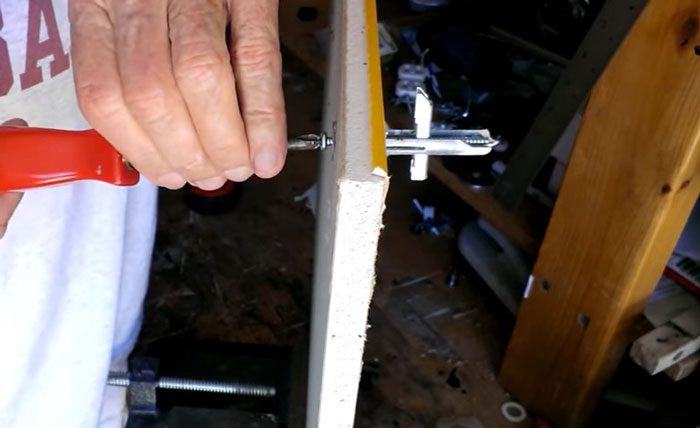
Following that, they should measure how deep they need to drill their hole based on manufacturer recommendations.
After drilling the hole in the drywall, they should use a hammer to insert and secure their anchor until it’s flush with the surface.
2. Wrong Anchor Type Used for Project
Another cause for drywall anchors pulling out could be using an inappropriate type of anchor for a project. There are several different types of anchors available, and each one works best when used in specific applications.
For example, toggle bolts are designed to mount heavier items like shelves on walls but cannot be used on ceilings because they require space behind them in order to deploy correctly. Whereas molly bolts are designed specifically for ceilings where there’s no room behind them for deployment.
You must choose an appropriate type of anchor based on their project needs to ensure proper installation and better holding power.
3. Hole Drilled Too Small or Too Big for Drywall Anchor

Improperly sized holes can also pull drywall anchors out. If a hole drilled into a wall is either too large or too small compared with an appropriately sized anchor, then it may not provide enough grip or support against which force can be applied upon insertion.
It is important that these holes match up with specified sizes provided by manufacturer guidelines so that there is enough friction between them when inserting an anchor into place.
Otherwise, this friction will not be present, eventually leading to issues with security and stability once mounting takes place.
4. Lack of Wall Preparation Prior to Installing Drywall Anchor
Having surface irregularities or obstructions on a wall before installing a drywall anchor can lead to premature failure. This means that all walls should be inspected and prepared accordingly before attempting to attach an anchor onto them.
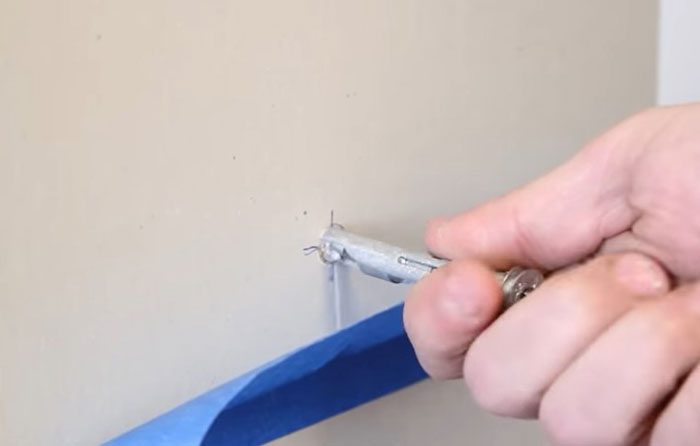
Any patches on the wall may need sanding down until they are smooth, while any protrusions should be removed to prevent any possible interference with how an anchor expands against a wall’s surface.
Aside from that, any obstructions like wires behind walls need to be considered when drilling holes since they can also prevent anchors from expanding properly against them, ultimately leading to their failure.
5. Poor Quality Product
Poor quality drywall anchors may also result in them coming loose from walls over time as well due to their lack of durability.
Inferior products do not have a strong enough grip on walls when they are installed, nor do they hold up under additional weights placed on them over time due to wear and tear from everyday use.
As such, it is important to ensure that quality products are chosen when selecting materials for any home improvement project, which involves installing drywalls anchors so as not to experience failures after the installation has been completed.
6. Overloading the Anchor
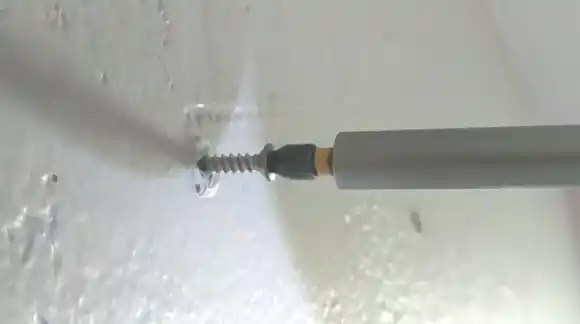
It is possible for drywall anchors to pull out if they are overloaded beyond their capacity. Quite often, it is difficult to determine exactly how much weight an anchor can support until it fails and pulls out from the wall.
This is because different types of walls require different amounts of weight-bearing capacity for each anchor type and varying lengths and sizes of anchors used based on interior design needs.
Therefore, when choosing a drywall anchor, one should take into consideration the anticipated load that will be placed on it in order to avoid overloading it and causing it to fail prematurely.
7. Expansion of Materials
Sometimes, the expansion of materials during installation can cause drywall anchors to pull out after some time has passed.
Different types of fasteners have different mechanisms for expansion when tightened into place, and some use expanding foam or other materials that expand when exposed to moisture for the anchor itself to grip firmly into place within the wall surface material.
If these expanding materials become degraded or break down before properly setting, then there is a higher chance that the wall anchor may begin to loosen and eventually detach from its original position in the wall surface material after some time has passed.
How Do You Get Drywall Anchors to Stay?
To get drywall anchors to stay in place, you should first use the correct size drill bit that matches the diameter of the anchor you are using.
Then, make sure you create a hole deep enough into the drywall so that when it is inserted, the wings on either side of the anchor can expand and exert pressure against both sides of the hole.
Tap the anchor with a hammer to confirm it goes all the way in. Finally, insert a screw through your item and into each anchor until it is secure.
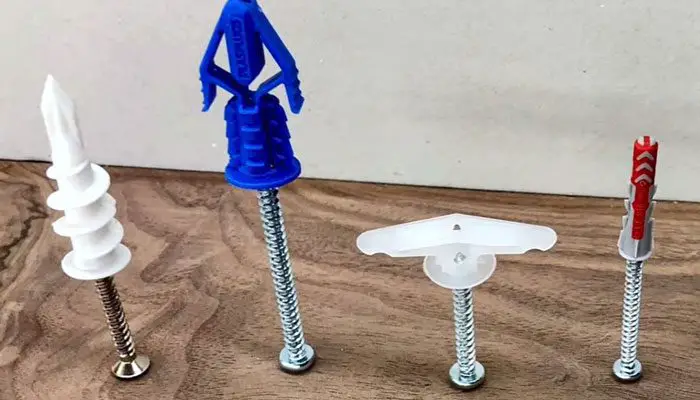
How Many Pounds Can Drywall Anchors Hold?
The type of drywall anchor and its size will determine how much weight it can hold. A toggle bolt is one of the most common types of drywall anchors, and it has a weight limit of up to 50 pounds.
Steel hollow wall anchor is also quite common, but it has a higher weight rating of up to 100 pounds for larger sizes.
It’s important to note that these numbers can vary depending on what type of material your wall is made out of and how securely your anchors were installed into the wall in question.
How Tight Should Drywall Anchors Be?
Drywall anchors should be tightened until they are flush with the face of the wall and cannot move around any further within their hole.
But, this should not be done too tightly, or else there could be a risk of damage or breakage to either part involved in this process (the anchor itself or even parts of your wall).
It’s best to give each anchor just enough tension, so it stays put without compromising the integrity in any way for the best results.
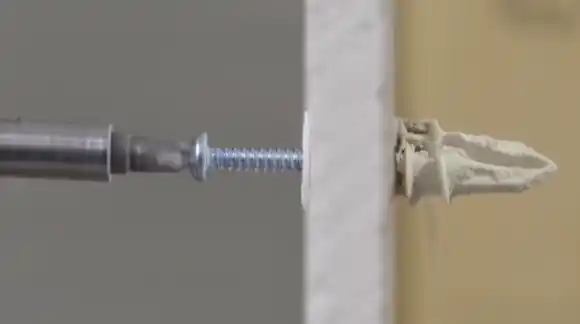
Can You Screw Into A Drywall Anchor Twice?
Sometimes, it may be possible to screw into a single drywall anchor multiple times. But this will depend on the type of anchor being used.
While many traditional metal and plastic anchors are designed for single use only and can become worn out or stripped when reused, there are certain types of removable wall anchors available that are designed for repeated use.
Such as toggle bolts and molly bolts, which allow the anchor to be removed from the screw once it has been tightened in place. These types of anchors typically come with instructions detailing how they should be reused if necessary.
Secure Your Walls Without Risk of Drywall Anchors Pulling Out
You have to choose the best drywall anchors for your project if you don’t want them to pull out.
Proper installation techniques that ensure the hole size is correct for the anchor being used will significantly reduce the chances of an anchor pulling out due to pressure or expansion of materials.
Also, taking extra care to prepare the wall before installing any sort of hardware will help ensure that all components are secured properly and prevent them from slipping out when weight is applied.
By following these steps and doing some simple research ahead of time, you can make sure that your walls remain to look great without risking any further headaches caused by drywall anchors pulling out.
